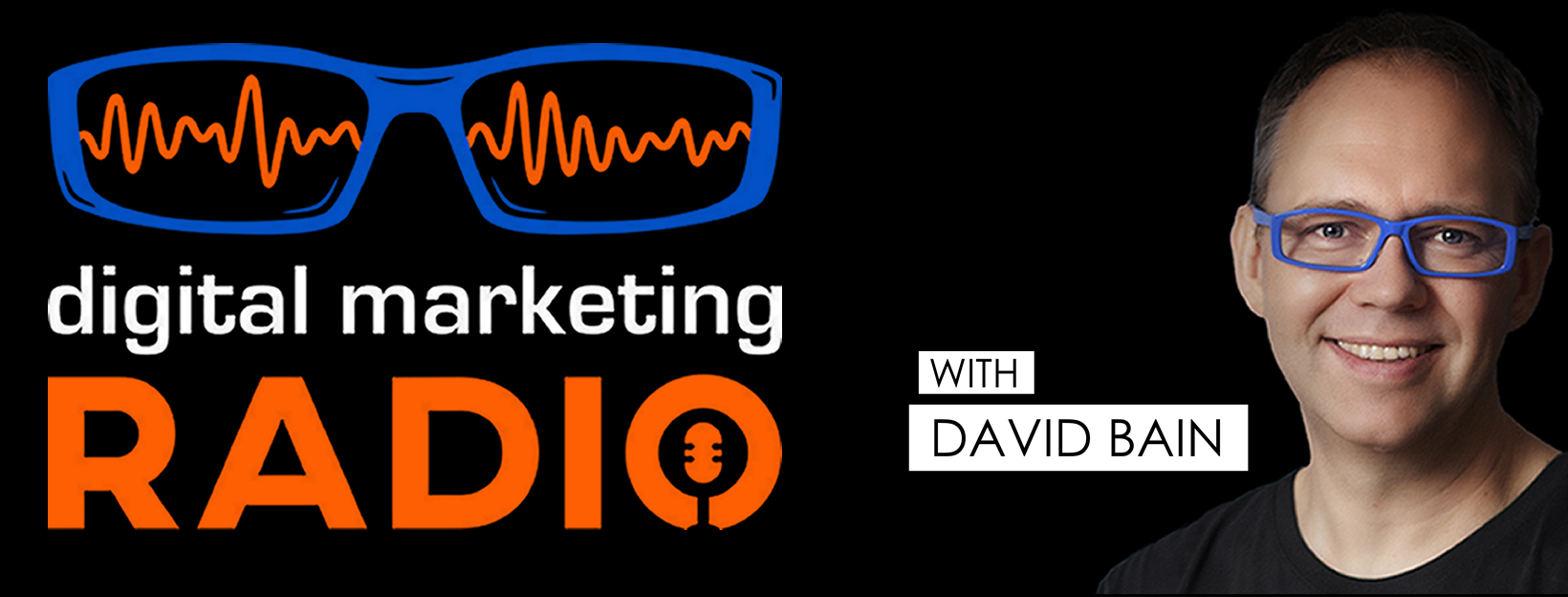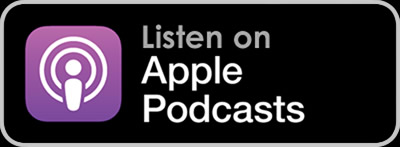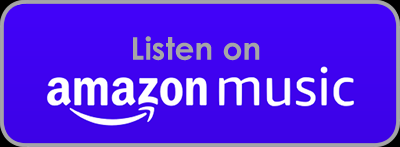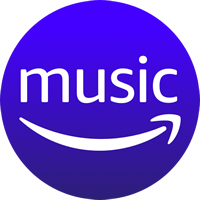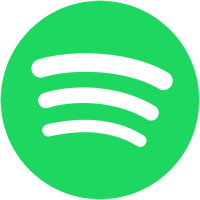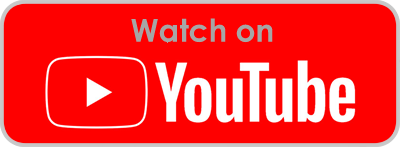Have you ever had to write web copy and caught yourself sounding like a used car salesman?
Maybe you haven’t had that much experience at writing for your own website and you want to make sure that your content’s compelling.
Joining me to share 3 Tips to Improve Your Copywriting on Episode 256 of Digital Marketing Radio is a lady who earned her sales and marketing stripes working in direct sales for 5 years.
Nowadays, she uses her retention-focused acquisition strategies with conversion copywriting to help SaaS, e-commerce, and tech businesses drive crazy-good growth at every customer touchpoint.
Welcome to DMR – Eden Bidani from Green Light Copy.
Key questions covered in this episode:
What’s different between writing a blog post and writing a web page, designed to drive sales interest?
So let’s look at your 3 Tips to Improve Your Copywriting – what’s tip number 1?
What’s tip number 2?
What’s tip number 3?
Can anyone write web copy or should you leave it to a specialist?
Is there an ideal length for web copy?
Is there a particular writing style that works best?
What are the key customer touchpoints that require compelling copy?
Where does what we’ve discussed fit into the Pump and Funnel marketing model?
Secret Software:
Draftium wireframing & Attention Insight predictive heatmaps
Next on the List:
Email marketing
Magical Marketer:
Nikki Elbaz
Audio recording:
Full transcript:
David Bain
Digital Marketing Radio Episode 256: 3 tips to improve your copywriting without being salesy.
Bot
Digital Marketing Radio with David Bain
David Bain
I’m David Bain. And this is Digital Marketing Radio, the podcast and YouTube show for in-house agency and entrepreneurial marketers who want to stay on top of the latest tools, tactics and trends, as shared by today’s modern marketing masters. Have you ever had to write web copy and caught yourself sounding like a used car salesman? Maybe you haven’t had the experience at writing your own website copy and you want to make sure that your contents compelling? Joining me to share three tips to improve your copywriting on episode 256 of Digital Marketing Radio is a lady who earned her sales and marketing stripes working in direct sales for five years. Nowadays. She uses her retention focused acquisition strategies with conversion copywriting to help SAS ecommerce and tech businesses drive crazy good growth at every customer. touchpoints Welcome to DMR edon. Danny. Hi, David, thanks so much for having me. Thanks so much for coming on. I just want to say you can find me over at greenlight copy.com. So I’m seeing a lot of video out there at the moment on sales pages on sales pages and landing pages. And does that mean that copy isn’t important anymore? Or as copy just as important as that everyone’s
Eden Bidani
think copy is just as important as it ever was? I mean, yes, I’m biassed, but I think copy is not just about the actual word itself. And this is where I think there’s that still why copywriters or writers should not be afraid of sort of AI assisted bots and things like that, or automatic copywriting or transcribing services, things like that. Simply because there’s you can input information and it might spit copy out. But what’s really truly at the heart of copywriting is forming the strategy. It’s which messages do prospects need to hear? At what at what no what point in their customer journey with a funnel to actually help them move from one stage to the next to actually make take that next step to take the action and to feel empowered and happy and you know, very satisfied by doing that. So there’s there’s a lot of research and there’s a lot of strategy that goes into that it’s not just about spinning words together. That is part that is part of it. But when you actually look at it in terms of copywriting, specifically conversion copywriting that research and strategies 80% of the process, the writing is just that is that 20% of the end.
David Bain
So how do you know what type of writing to include in different places? I mean, what’s the difference, for instance, between a blog post, and writing a web page designed to drive sales interest,
Eden Bidani
the format impacts on how the copy or how the content is going to be read. So if you think from the point of the user, when someone clicks on lands on a blog post, they know they’re going to be doing some heavy reading, when someone lands on a landing page, it’s, you know, it’s there. It’s their intuition, they come to a landing page, and they know they’re going to see sections of copy, each section is going to have a certain amount of information, there’s going to be certain sections on the page, there’ll be things that they’re looking for things that they expect to see in a blog post as well, they’ll expect to see an introduction, they’ll expect to see supporting evidence, so expect to see some images, and some bullet points and things like that, expect to see a conclusion. So there’s users nowadays and people, you know, anyone online have different expectations of what they’re going to see. There are different ways that we read and engage that information and engage with that information that’s on each page. So in terms of finding out what messages or what actually needs to go on the page, that’s something that’s found. Sorry, that’s something that’s, that we come up with during the research process, usually figure out what prospects where prospects out are now in terms of their journey, what the The goal of the piece is meant to be doing, whether it is to drive awareness, whether it’s to get them to perform an action, like to sign up for an email newsletter or to sign up for a free free trial of something or even to buy a product at the end of the page. And we you know, we find, we find that we source those messages from within the research and then are able to piece it together thing is Eugene Schwartz once said copy is not is not as high as copy is not written it is as it is assembled. It’s actually you’re taking all these pieces of information together and assembling it in a format that makes sense for the reader and how they’re reading it. But then as well it contains enough information and at the same time is suddenly persuasive enough to actually move them to a point where they’re ready to take that next step.
David Bain
I like that. I like that. I’m going to put together a couple of books. And it would have been impossible just to start writing, you have to start with your chapters first, or certainly I did anyway. And I guess it makes complete sense to do the same thing with with with web copy as well. So today, we’re looking very specifically at three tips that you’re going to share. So what is tip number one?
Eden Bidani
Alright, so tip number one is to write copy that matches your customers voice, your customers natural voice, our natural way of communicating as closely as possible. The this, this is something that comes from what we know from anthropology is that if you communicate with people in a way that’s familiar to them, they’ll be more receptive to you when you have when you have a message or you have something that you want to share with them. So first off, you need to show prospects that you understand them. And by doing that, you can use those subtle nuances in the language in the in the words and the way you write in the rhythm of how the things are pieced together to actually communicate that on a subtle level.
David Bain
So how do you find out who the customer is do you? Do you do some kind of focus group Do you do phone people aren’t Do you just ask him, whichever firm, you’re writing for what the average customer looks like.
Eden Bidani
So first of all, so first of all, that’s part that’s and that’s part of the research process. So often, often, the company should have a fairly good idea of what their customers like. But we also do extensive customer research as part of that. So we do actually conduct surveys, we will actually conduct one on one customer interviews, to actually listen as much as possible to listen to who these customers are trying to understand them understand how they think, understand how they like to express themselves. And kind of those common phrases or words, or what we call sticky copy. Things that really stick out is really a highly charged are emotional statements, or unique ways of expressing concepts that you couldn’t actually create off the top of your head. So when you so you actually source those directly from the customers themselves. Or it’s also anonymous, anonymous, anonymously, by going to online forums and things like that, like Reddit, or Facebook groups and things where you can actually pick up and just immerse yourself in your environment and listen to how read how people are communicating with each other. And then try and make sure that translates over into the final product, because that’s going to make people feel at ease from the minute that they’re reading. That’s very different. You know, if you think the traditional salesman coming in or wedging their foot in the front door, it’s something very, it’s something very aggressive, and it feels very forced, it feels like they’re coming to, you know, conquer something, that whereas if you start up a conversation, and you’re talking to someone on a level, it sounds like a conversation, you’d have a networking event or at a party or you know, sitting down with a friend over coffee, and that first of all, puts them at ease, and also makes them feel comfortable with listening to what you have to say, because you’ve shown them that you understand that.
David Bain
I love that. And I love your suggestion of finding very specific phraseology that maybe certain industries, or certain types of people will use, and perhaps a copywriter may not be aware of that at all. So very important research to be doing. That’s number one. So what’s number two?
Eden Bidani
So number two is to try and counteract objections in the body of the copy. So you know, as as any of us goes through and makes a purchase decision, we all have these questions that we ask ourselves, you know, what, what is it like? What does it do? How does it function? You know, no matter what the product offering is, it could be a service, it could be a physical product will be software, you know, we all have these questions. How do I sign up? What’s the next step? You know, what am I going to experience? You know, what is this going to give me? How much does it cost? You know, we all have different types of questions, those questions, will, will be defined by what piece of content or what piece of copy it is and where it sits in terms of the the general customer journey or the funnel, if you look at it that way, but you can help counteract some of those objections that they’re that they’re coming up to counteract those questions by already answering them in the body of the copy. So during the research, you’ll actually hear what they you asked them questions, you could ask customers questions like so what was there anything you struggled with during the signup process? And they’ll say, Oh, yeah, I struggle. I found this hard, I couldn’t find the button, I could do this, I couldn’t do that. So in your explanation of how to sign up, instead of going to go to product or going to the dev team and say you need to fix a, b and c, you can simply put in the copy. This is how it works, make sure you look out for click on X button that’s on the right hand side. So you can actually translate things and show them that what you’re promising them and what they’re actually going to get on the other side of the page or the other side of the button is actually the same. And that’s going to create a lot of trust that’s going to give them a lot of confidence in their decision to to convert as well.
David Bain
Wonderful and those objections. Potential objections sound fairly common, saying the same for any type of business is that the case or two objections tend to differ quite significantly depending on the type of business that you’re writing for.
Eden Bidani
It does depend a lot on the different types of business, the different type of it depends a lot on the offer as well what the offer is, if it’s cold, you know, if someone is offering a coaching programme versus if someone’s offering, you know, assess, assess product, it’s they’re going to have very different questions. But essentially, there’s a minimum, there’s kind of a minimum amount of information that everyone wants to know, some people won’t need all that information. I mean, there are we, you know, people have different personalities, some people are right to skim through a page and pick up cherry pick a couple of pieces of information go get, that’s enough for me, and they’re happy to convert, while other people do need everything laid out for them clearly and logically. And they need that to give that confidence in order to help them to convert. So if you have that information available for them, whether they read it or not, it’s still there. And then it still It also serves to help build trust in the end together their faith, you know, in you in the value, the validity of the offer and what you’re offering and what you’re selling them.
David Bain
So integrates the countering of objections into your copy. So that’s number two, what is tip number three.
Eden Bidani
And tip number three is to focus on using as little jargon as possible to really use as little jargon, you don’t want to use any jargon any buzzwords. The only exception is that if the audience and again, this comes back to the research, if the people you speak you’ve spoken with, or the customers, you see that they use these buzzwords or jargon in communicating between themselves, then it’s okay to include some of them. But a lot of what companies do is they struggle with, with communicating what they really do so or they talk about all the features of what they do, which is often very dry it you know, dimension size, how it functions, you know all the different elements of a product or that talk only about the benefits. So it’s going to transform your life, you know, you’re going to live, you’re going to live this wonderful stress free life, you’ll be happy waking up every morning when they don’t actually tell you what the product is, or what it does, or the services. So they can they can struggle doing both. And when you focus on removing the jargon, so it’s what do you have that slept. So you’re looking at, looking at explaining what you do and what you have and what the product is and how it’s benefiting them in the simplest terms as possible. So that it’s very, very clear, even if the audience is quite sophisticated, it can really help them understand very quickly, what you have to offer as it can benefit them.
David Bain
So is it ever a good idea for someone within the business who’s not a specialist copywriter to be doing the copywriting? Or is it always better to have a specialist come in and do it?
Eden Bidani
Well see market is by definition, anything a marketer writes is copy because marketers have that perspective that they’re coming in, and they’re, you know, each piece they know is meant to fill a certain objective. Whereas with content writing, or content strategy, usually something, it’s something that’s a lot more fluid, it’s something that’s a little more fluid and flexible. And it’s a very, it’s a different word altogether, and all the power to the content writers out there, they’re amazing. But marketers by nature, what they do, what they write is copy, so it’s ad copy, it’s website copy, or it’s an ebook or a blog post that’s driving people to take a certain action or to move them you know, to move them in some in some way or another to one from one point of the funnel to the other or one point in the customer journey to the other. So I mean, marketers can get help from copywriters, but that marketers are usually very, very good at least at doing a doing the legwork. what’s what’s tricky for marketers, because they usually don’t, they don’t necessarily always have that time to go in and do that in depth research. To You know, upfront to release or to always speak with a customer, some companies do, and it’s great. Some companies might have the UX team during their user research team or customer success during that. And then sometimes it’s just a matter of connecting those silos together to let the marketers have that access to their information, which will help improve their own copy.
David Bain
So is there an ideal length of copy? Do you have to have a copy be a certain length so that you’re covering everything that you want to cover, including all of the potential objections? Or is it possible just to be very short and succinct? And is that indeed sometimes better in an environment when people have pretty short attention spans?
Eden Bidani
It’s kind of like the question How long is this period, you know, how long is a piece of string copy is should be only as long as it needs to be needs to be to get its point across. So if you have a complicated product or service, you have an audience who is mostly unaware in terms of their stage of awareness, they’re going to need a lot of explaining first about what the topic is, how it’s beneficial to them. And you know, and then actually to start persuading them on why you know why this your company is the best company to actually offer this solution for them. They’ll need a lot of priming and a lot of explanation. To help get them from one from one point to, you know, from the point of unaware to actually to a point where they’re going to convert for whereas if you’re looking at, if you’re looking at someone that’s closer to the bottom of the funnel, and they’re they’re really warmed up, they’ve got very high level of, you know, very high interest in the product, they only need a couple of nudges or a couple of small reminders about why, you know, why you why your product and why, you know why it’s great to act now, you know, and to and to not delay converting to another point in time. So, it depends. So it does depend, if it depends, again, on the stage of awareness, a lot of it in terms of how long your copy should be.
David Bain
So we’re talking a little bit to begin with, before we started to record about the pumping funnel model that I’m developing, and I was just wondering if you could possibly share your thoughts on perhaps the difference between the copier required, and at the early stage of the funnel, when you’re perhaps publishing great, incredible hero pieces of content where people have only discovered your brand for the first time, and you’re making them subtly aware of, I guess what else you do is a business compared with your more conventional sales pages or product information pages. So So how much can you get away with selling in that initial touch point.
Eden Bidani
So again, in terms of how much selling when you’re looking at the top of the funnel, there is, and how much awareness a prospect has of who you are. And what you do, the primary selling, selling that you’re going to do in the first at the top of the funnel, is building trust with the prospect or building trust with the audience. And that’s by providing education educational content that’s through that’s executed through the content that, you know, that’s delivered. So. So in terms of in terms of connecting that back to your product, it’s only once they’ve once they’ve reached the bottom or the end of the piece really that you can actually make that it’s right to usually make a plug for your own product or service. Once you’ve actually delivered the value up front, you’ve convinced them that you’ve got something valuable to offer, you’re not just pitching them a product, but at the end, you can make draw the connection towards that in your product, that’s something that’s usually that people are usually very receptive to, to hearing and listening to. If you start off, even though if you start off a blog piece, and the first product listed is your own, people are gonna go, a lot of people will often click away from the blog post, because they’ll feel that it’s very, that it’s very, that it’s, they will definitely feel that they’re trying to be sold, and so they will edge away from it very quickly. Whereas at the bottom of the funnel, you can focus more on the product, you can focus on the customer, and the transformation that they will get as a result of purchasing the product or the offer that you have. Again. So the bottom of the funnel will be more you will be selling not necessarily the product you’ll be selling the dream or the promise that comes with the product. So guess what, how their life will change for the better once they’ve actually once they’ve made the purchase, or once they’ve clicked through or signed up?
David Bain
makes total sense. I love it. Yeah. And I think a lot of men often compare content to podcasts, because that’s what I focus in on. And I think a lot of podcasts start off with a minute of this is who we are, this is what we do. And it switches people off. And if people actually get through that minutes, then immediately they’re feeling okay, what else you got to try and sell me over this podcast instead of actually focusing on the content. So deliver high quality content, first of all, and then if you produce a podcast episode towards the end of it, and people like what you do they want to find out more about what you do and perhaps what products or services you offer.
Eden Bidani
Absolutely. It’s It’s funny, it actually happened to me earlier on this year, I actually presented at a conference. And I forgot to pitch myself I literally didn’t include it. I just went straight for the value. And when I had someone send me a message after that I loved how you didn’t pitch yourself at the beginning of it. Oh, was I supposed to do that? But actually, I ended up getting really good feedback actually from the top because people said yeah, you just went straight to the value interest in terms of that that was actually that was an accident but but it’s in line with my with my personal philosophy, I think if you have to be comfortable with sharing value, upfront value is what people are looking for. value is what makes what would add value is what will make people listen to you the absolutely
David Bain
love that. And I can compare it with LinkedIn connection requests and what people say as well. But let’s not go down that rabbit hole. Let’s segue to part two of our discussion. So it’s now time for Eddins thoughts on the state of digital marketing today so starting off with SECRET SOFTWARE so I can share our lesser-known martech tool that’s bringing a lot of value at the moment and why that tool is important for you.
Eden Bidani
I had to actually it’s really hard to choose between them the first. The first one that I love to use at the moment is draft him. It’s wireframing and prototyping tool. So as a copywriter, I like to build out a kind of a scope or an idea of how the page or how the copy will be presented, because as we discussed, the format impacts how the copy is read, how it’s how the copy is formatted impacts on how the copy is read. So I like to, it’s super fast, it’s super light, I love how it does everything in grayscale. So you’re not mucking around with colours and things like that. But you’re just focusing on how things are laid out in order to help people absorb the content, you know, in the best way, in the best way possible. And the second one is called attention insight. It’s, it’s a predictive heatmap analytics tool. So I absolutely love it. So you can actually check. You can check concepts, you can check creators, you can check landing pages website, here or section, things like that NC, more or less get an idea of how they would perform in terms of eye tracking attention and alerts. But without without actually having to send it to focus groups, or send it for user testing.
David Bain
And both of those tools are very easy to find as well with the domain names are exactly as you would imagine, draft yoma has a free freemium model. So they’ve got a free start, certainly, as well. So two great resources there, thanks for sharing that. But let’s move on to something that you from something that you currently use to something that you’re going to use. So that is NEXT ON THE LIST. So what’s one marketing activity or tool that you haven’t tried yet, but you want to test him?
Eden Bidani
I’m actually going to get into email marketing very soon as in something on my to do list for a very long time. And I do it for my clients, but I don’t do it for myself, you know, kind of the story that she makes good goes there for. So
David Bain
frequency and just overview of content Do you intend to publish?
Eden Bidani
I’m thinking, I’m thinking almost a bi weekly or a once a month newsletter, but something that’s really packed, I think we find this level, it’s very, very difficult to get into people’s inboxes. Second, the fact that even people send emails frequently, often doesn’t mean that they’ll get read. I mean, just people’s time is so precious. And I’m thinking from thinking just from my own experience, but I know this is something that people are saying they’d much rather read one piece a month or a piece every couple of weeks. That’s really packed with with useful information rather than get this drip, kind of this constant drip all the time into their inbox.
David Bain
Yeah, definitely. I think people are after quality, and they’re quite comfortable with it being once a month and they’ll remember you if you deliver something of high quality. So I think you’re absolutely spot on there. But let’s move on to this or that route. So this is the quick response round 10 quick questions, Just 2 rules here. Try not to think about the answer too much. And you’re only allowed to say the word both on one occasion, so use it wisely. Are you ready? Okay. All right. Yes. tik tok or Twitter. Tick tock, Facebook or LinkedIn, LinkedIn, YouTube or podcast, YouTube, traffic or leads. Leads paid search or SEO, paid search, ads or influencers. Influences ads or influencers. Both Google ads or Facebook ads, Facebook ads, email marketing or chance marketing, email marketing, Mar tech stack or all in one platform? tech stack and one to one or scale? One to One? I don’t think we had a both on ads or influencers before. Are you actively using both at the moment? or Why did you get that answer?
Eden Bidani
No, but I think each one can help accelerate the other. I think when you’re looking at running paid ads, it’s very difficult if you’re just starting out unless you have a really warmed up ad account or you have extremely talented media buyers. I know that’s something it’s a struggle for a lot of people influences I manage as well. It’s I see it as a combined approach. I think influencers can bring in traffic from different sources and it doesn’t you know, to further to fill that funnel they can and they can help boost the effectiveness of paid ads. So when people see a product in an influence attend and then they’ll see an advert they’ll be more likely to click on it not just directly through the influencer but it pays off in terms of the papers that you’re running as well and vice versa. So if they see pay dead and then they see an influencer, talking about this product that they’ve that they’ve seen an ad for recently. So they go oh, okay, so they kind of they started You know, let that light bulb moment, like, Oh, this is something that I might want to check out.
David Bain
Okay, well, let’s move on to the $10,000. Question. If I were to give you $10,000, and you had to spend over the next few days in a single thing to grow your business, what would you spend it on? And how would you measure success,
Eden Bidani
and I would invest in building a really solid website, I think the website these days is it’s your online business, it’s your calling card, it’s where people come to learn, to get an idea of who you are, what you do, and how you how you help them. And, you know, you can also include so many more capabilities within the body of the website with interactive content these days, you mentioned as on the chat marketing, you know, lead generation forms are lots of different ways. And even just top of funnel content, all of that can be housed within the body of the website. And it’s almost like its own. Almost like if you think a TV channel or a podcast channel, you come there, and there’s all this wonderful information. But you can drive traffic there and in all sorts of different ways. But I think if you don’t have a really good, strong website, anywhere, any of that traffic coming through is just going to get lost. I think it’s I think it’s a waste. I hear a lot of people trying to drive traffic. And then you look at their website, and you know, they’re spending 1000s and 1000s, every month on paid ads, but then you take a look at their website, and I said, Well, website is not actually set up well to receive traffic coming to it. So I think you need to take care of the court that core first before you can do anything else.
David Bain
Would you use WordPress or something else?
Eden Bidani
Um, it’s a good question. I’m not sure I am a fan of WordPress, but I know there’s a lot of great options out there. Okay. I’m not 100% Sure.
David Bain
That’s, that’s okay. Okay, well, let’s change course by focusing on someone else who deserves it. So that is a MAGICAL MARKETER. So who’s an up-and coming marketer that you’d like to give a shout out to? What can we learn from them? And where can we find them?
Eden Bidani
And yeah, so I would I know, we’ve spoken a lot today about email marketing, but I’d love to recommend my friend, Nikki Alvarez. She’s brilliant, everything email marketing. So in terms of not just how to set things up properly in the backend, but as well in terms of getting, how to segment customers, how people make decisions through emails, have to connect emails and sequences, and then how to split those sequences into different segments. But then also how people read and engage with emails and how to break patterns in emails. I think a lot of email marketing is kind of the same. I can buy today I can buy today are going to buy today and there’s so much more that you could be doing with email, with email marketing, so I think would be fantastic. Super, but taking away two things
David Bain
that you shared a lot of wonderful content on today’s episode, where’s the best place that someone can follow you online? What’s the best social channel? LinkedIn, LinkedIn would be the best. That’s was Episode 256 of Digital Marketing Radio, we’re Edinburgh Danny from greenlight copy shared three specific tips on writing copy for the web. Number one, right for a specific customer in mind. Number two, counteract objections and a copy. And number three, include as little jargon as possible, do not sell your products at the top of the funnel. We also talked about that. We talked about how you should sell your authority from the top of the funnel don’t focus on products don’t sell focus on services focus on your products. Here’s the secret so for Adam was that draughty and wireframing. And you also included attention in sight predictive heat map as part of that as well. Your NEXT ON THE LIST, email marketing, because you’re not doing much of that at the moment. So you wanted to do perhaps perhaps a monthly email at some point and you MAGICAL MARKETER it was Nikki l bands. We will include links to all of those resources in the show notes at Digital Marketing radio.com Thanks again so much for coming on. Absolutely wonderful to have you on. I’ve been your host David Bain. You can also find me producing podcasts for B2B brands over at Casting cred.com until we meet again, stay hungry, stay foolish and stay subscribed. Aloha
Unknown Speaker
radio.com radio.com Digital Marketing Radio, Digital Marketing Radio, Digital Marketing Radio

